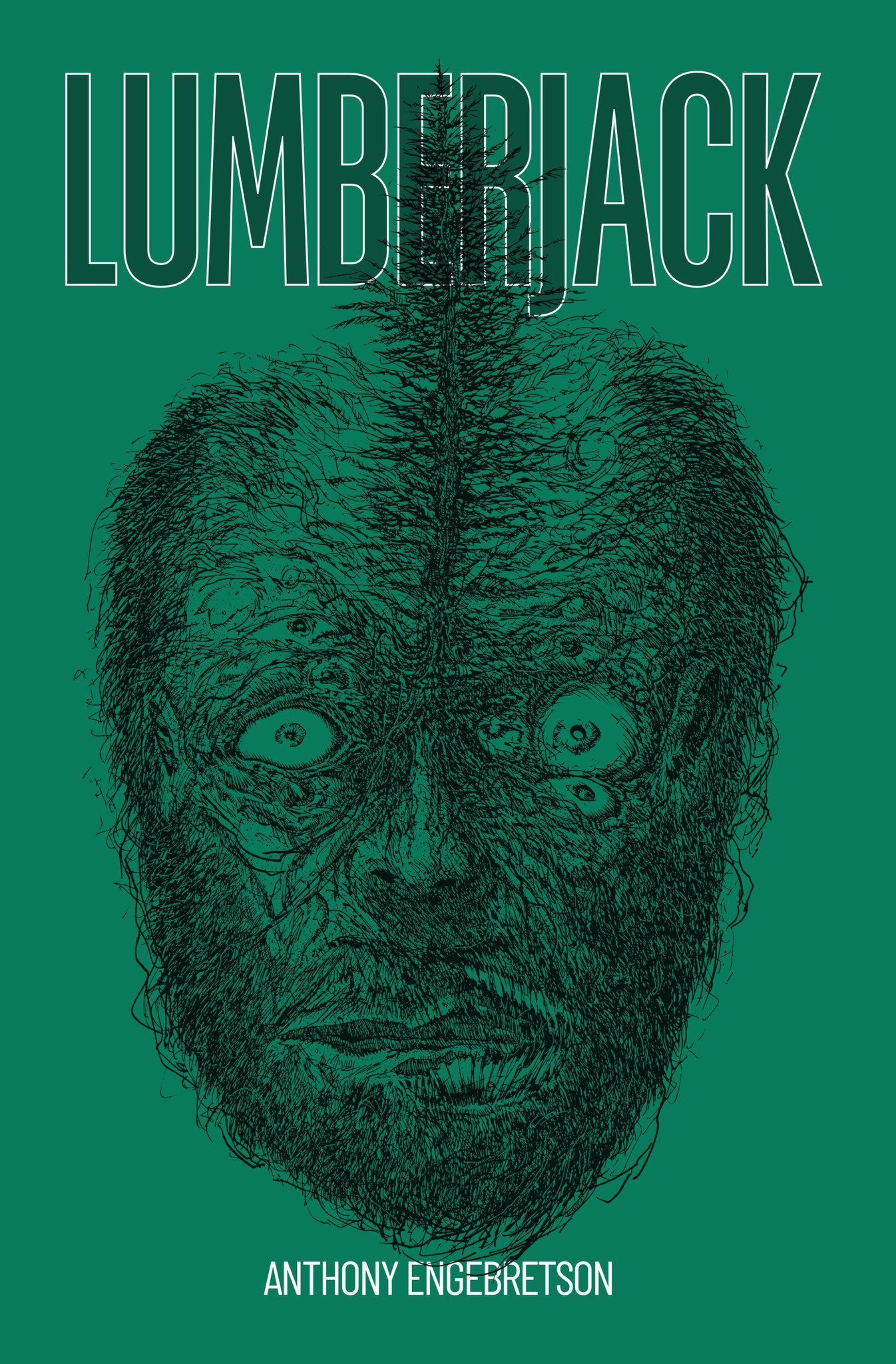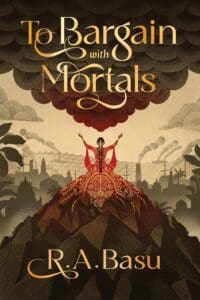
Synopsis:
Nebraska city, 1901.
There’s a curse on Arbor Lodge—an elusive demon reclaiming the illustrious home in the name of the prairie—and its owner, J. Sterling Morton, proud statesman, is desperate.
It couldn’t be more fortuitous for lumberjack Neville, whose greatest desire is to prove himself a true man to the world. Morton offers respect, security, pride, even the father figure Neville never had; and all the lumberjack has to do is find and kill this creature.
There’s no doubt in Neville’s mind that he deserves to rise to the status of legend. He will prevail. It’s in his blood.
Or else, his blood will be in the prairie.
Review:
From the very first pages of Lumberjack (Tenebrous Press), I found myself calling up cinematic parallels. Specifically, I was thinking of a kind of private dichotomy that I use when presented with something so strange and quirky, so stylized, and so laced with dread. This is the Wes Anderson vs. Coen Brothers dichotomy.
Both filmmakers (or filmmaking team, in the Coen’s case) create very unique worlds for each of their films, and the costume and set designs are unique and painstakingly selected. These are films with distinct looks and feels to them.
On the Wes Anderson side of the spectrum, I place films that dress up their movie in tons of style, while the emotional and narrative end tends to be lacking. They’re fun places to visit, but you wouldn’t want to spend much time there, and you probably wouldn’t return again.
The Coens, in my opinion, exist at the opposite end of the spectrum, creating intricately constructed stories filled with unique and puzzling people, and the design follows, as style ought to do, the needs of the story.
This is a very long way to describe the question of style vs. substance.
I’m happy to say that Anthony Engebretson’s Lumberjack falls squarely in Coen Brothers territory, beginning with a character study of a very troubled soul and then builds a hostile, wild, surreal world around him. This world is painted in vivid hues, peopled with interesting characters, and provides more than a few twisty turns, all while maintaining its dedication to its protagonist and his “unique” view of the world.
Neville, out protagonist, is one of my favorite character types: the guy least suited for the job at hand. The guy in question is a scrawny, terrified rich kid with dreams of grandeur. The job, at least the job at hand, is to kill the monster haunting his benefactor’s family home.
Neville, who carries Alexander, his ax, with him everywhere he goes, sees this as a quest that he is finally worthy of. It appears he has been decidedly unsuccessful at everything else he has turned his hand to, and he routinely collapses in paroxysms of terror when faces with small animals, but Neville has a tremendous faith that somewhere, deep inside him lies some so far unseen source of strength.
The reader is less sure.
When he is taken under the wing of J. Sterling Morton (a real historical figure and founder of Arbor Day), Morton feeds Neville everything he needs to complete his self-portrait of virile manhood. It is a portrait of Manifest Destiny wrapped up in toxic masculinity and even more toxic white supremacy.
After a conversation with Morton, Neville has transformed himself into a Teutonic warrior king set to rescue civilization itself from the grip of savagery. He might need a small break to masturbate to this imagined image of his future glory first, though.
Did I mention the book is very funny? Because it is. Even when Neville’s ax eventually and necessarily brings death, and the mood shifts from odd character study to something closer to ax murderer freak out, the view is so stilted, the POV so purely Neville’s, that even great violence is given over to dark comedy.
Second only to Neville himself is the book’s setting: a Nebraska that never was. Neville enters the Arbor Lodge and leaves this world almost completely. The Morton home is a gothic phantasmagoria, haunted by the memory of both Morton’s dead wife and the historic deeds done there (a treaty with the Pawnee is immortalized in a painting that becomes almost another character in the book). But the Nebraska prairie is at war with the house, and grasses grow up through the floor, prairie dogs haunt the rooms, and what lies behind the locked door upstairs cracks open reality itself.
Lumberjack is a quick read that is jam packed with not only highly stylized images and action, but with ideas. Man’s supposed dominion over nature, racist attitudes, and a warped conception of masculinity are the real sources of horror, and Neville doesn’t have nearly the strength to fend them off.
The reader, thankfully, is there to witness his fall.








Leave a Reply